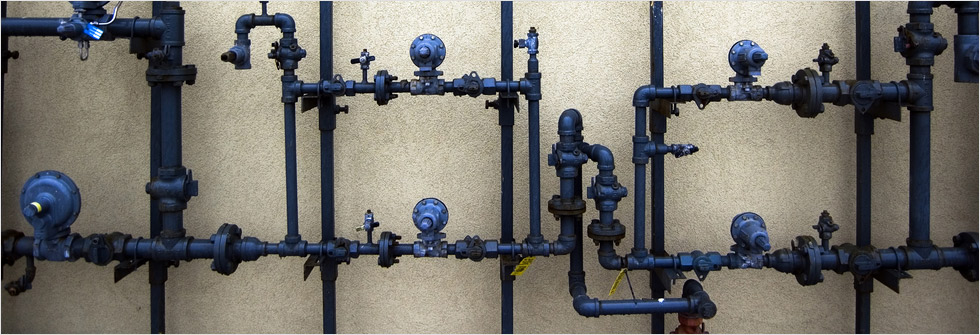Stop the Clog
* Do you have frequent sewer line backups?
* Do you call the plumber more than twice a month?
* Do roots grow in your sewer line?
You could be a victim of “The Clog.”
Cooking fat, oil and grease (FOG) is a leading cause of sewer pipe clogs. FOGs cool and congeal on the inner walls of sewer lines and on tree roots that grow in them, much like arterial sclerosis in our bodies. The resulting clog restricts sewage flow, which can cause a “stroke” of disaster, backing up in your home or property, or even in the street. In fact, kitchen grease is a leading cause of sewer spills in most cities.
To prevent clogging follow this simple Recipe for Fat-Free Sewers:
1. Keep cooking fats, oils and grease out of drains.
2. Scrape plates and cookware and pour out all fats/grease into a container and place in the trash.
3. Use a plastic liner in the trash to prevent leaks.
If you suffer from clogs, call a reputable plumber. Many plumbers have attended partnering workshops with local municipalities to learn the latest in sewage spill prevention regulations and best management practices.
If you prefer to remove the clog yourself, remember to use a snake. Don’t use caustic drain cleaners or copper-based root killers. Copper is toxic to aquatic life. And never use combustible solvents such as gasoline.
Hire the Right Plumber: What to Ask When Choosing a Plumbing Contractor
This email came from the state Department of Labor & Industries:”Any food going down the drain, along with extra friends and relatives, can put your plumbing system into overload.”
Makes sense, then, that the day after a holiday is one the busiest times of the year for plumbing contractors. If you are in need of a plumber, the Department of Labor & Industries advises Washington homeowners to choose carefully.
“Not all plumbers are created equal,” said Bruce Springer, Technical Specialist of Plumber Certification at L&I. “Professional plumbers have specialized training and certification from the state.”
To get your pipes working again, L&I advises homeowners to do the following:
· Before a plumber starts work on your home, ask to see his state license declaring him a certified residential or journeyman plumber.
· Ensure the company the plumber is working for is registered with the state as a general contractor or a specialty plumbing contractor. You can look up any plumbing contractor using the contractor look up tool on the L&I homepage. Contractor registration ensures the company is bonded and insured, should something go wrong with the job.
· Those learning the plumbing trade must maintain an active trainee card. Plumber trainees are required to be supervised by a certified plumber while on the job, which means they shouldn’t be sent out to jobs alone.
It’s also a good idea to get your bid in writing before work starts to avoid any issue with payment or what the contractor is getting paid to do.
Does Going Green Limit Homeowners?
By now you’re familiar with our series uniting experts in the home improvement industry. If not, read our Blog-Off announcement.
During our last Blog-Off, our experts predicted the 2011 home improvement trends. They outlined everything, from colors and design to materials and fixtures. However, one trend dominated the rest: going green. Thus, for this Blog-Off, we wanted to see how going green affects the homeowner.
Why We’re Asking
Over the past few years, Going Green has become an increasingly popular trend and it looks like it is here to stay. Sustainable materials, energy efficient appliances, re-purposed furniture, recycled artwork…the green movement is appearing in our homes now more than ever. Implementing eco-conscious practices into our homes not only protects the environment and resources, but it can also protect our families, by eliminating toxins, for example. As a consequence, many people are injecting some green into their homes.
As the green movement gains steam, more eco-friendly alternatives are becoming available. However, going green is a relatively new concept, so it got us thinking. If “green” is a new concept, wouldn’t that mean there aren’t as many eco-alternatives to fuel endless remodeling possibilities? And, if that is the case, wouldn’t it mean homeowners would need to make sacrifices in order to go green? For an individual homeowner, are these sacrifices worth it?
We aren’t sure ourselves, so we’re turning to the experts for help and we’re asking them to weigh in right here in the comments. What does this mean? Homeowners will get the raw, unedited answers directly from the experts. It also gives you, the homeowners, an opportunity to ask the professionals for clarification directly. This is the forum to learn the insiders’ opinion on going green.
So experts, it’s time to dish it:
Does Going Green Limit Homeowners?
We want more information on how this green movement is affecting homeowners, so enlighten us!
• How do you think going green constrains homeowners in the design/remodeling process? Are there any limitations or sacrifices required?
• How does cost play into this: do you think homeowners sacrifice hard-earned money by going green? Where is the overlap between being cost effective and going green?
• For homeowners on a smaller budget, which green elements are the most cost effective? Does a small budget limit going green or can a little go a long way?
